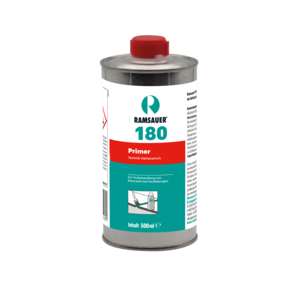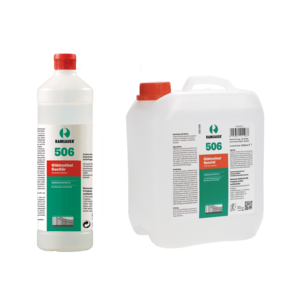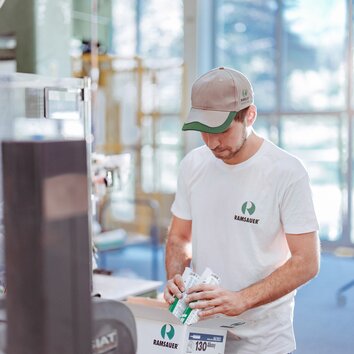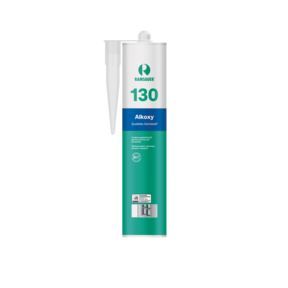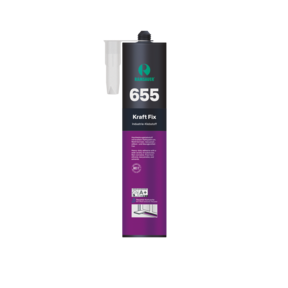
They seal joints in bathrooms and garages, fill cracks in walls or are used to seal metre-high facades. Sealants are indispensable on construction sites and are needed for a wide variety of applications. However, in order for them to fulfil their role for as long as possible, choosing the right filling compound is just as important as perfect application.
Choosing the right sealant
The selection of different sealants is just as diverse as the areas of application. When choosing the right sealant, you should consider various aspects of your construction project:
- What materials are used?
- What is the nature of the substrate?
- Which joint should be sealed?
- Where is the joint located?
- What external influences affect the sealant?
- What building regulations apply to the area of application?
Silicones are characterised by their resistance to water, temperature and chemicals. They are therefore very well suited for countless applications such as sanitary areas and kitchens. In addition, this type of sealant is particularly elastic and ideally compensates for movements. Silicone is therefore preferred for sealing washbasins, natural stone or glass. Neutral-curing silicones are suitable for applications directly on masonry, while acetic-curing silicones are ideal for ceramic tiles. Due to their extremely high resistance to UV radiation and weathering, silicone sealants can also be used outdoors.
Whether stone, wood, masonry or plasterboard – due to their compatibility with a wide range materials and their easy processing, acrylic-based sealants are suitable for a wide range of applications in interior fitting and finishing. They are often used especially in places where moisture is not to be expected. Furthermore, acrylic can be painted over and is therefore not only suitable for filling perimeter joints and joints between walls and floors. It is also ideal for repairing cracks in masonry or wooden components. Another advantage of acrylic over other sealants is that it is odourless.
Hybrid sealants combine the best properties of silicones and polyurethane compounds. That is why they are suitable for many different applications indoors and outdoors or even for the renovation of new buildings. They are not only highly elastic and moisture-resistant, but also adhere to many materials such as concrete, wood, metal, glass and many plastics. Furthermore, these sealants can be plastered over as well as painted over and are almost odourless.


Preparing the substrate
The adhesion surfaces must be dry, capable of bearing, and free of dust and grease. If adhesion is poor, the substrate must be primed with a primer coat.

Avoiding three-point adhesion
The sealant must only be bonded to the joint edges in two places, otherwise cracks may occur. In order to avoid three-point adhesion, you must use a backer-up rod for backfilling, especially for deep joints.
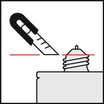
Adjusting the cartridge opening
Cut the nozzle of the cartridge at an angle depending on the joint width.

Perfect smoothing
A suitable smoothing agent ensures a clean and smooth surface. Choose one that matches your sealant. Household washing-up liquid is not suitable because of the chemicals it contains and can cause discolouration and damage. Special tools are best suited for smoothing the joint cleanly.

Regular checks
Check your joints at regular intervals. Cracks or visual defects should be repaired as soon as possible because dirt and moisture can lead to mould.
Frequently asked questions about applying sealants:
There are different reasons for cracks in joints – moisture, strong temperature fluctuations or UV radiation can cause such damage, as can movements of the individual components. Application errors are also often responsible for joint cracks. Minor damage can be repaired, but in the case of larger cracks, the entire joint needs to be replaced.
Paint-compatible sealants and silicones adhere to materials that have previously been coated with a paint. Paintable sealants can be painted over or varnished after drying.
When choosing a primer, the sealant and substrate should be taken into account. You will find a table in the technical data sheet for our products which will help you make your choice.
There can be various reasons for the discolouration of silicone joints. Environmental influences such as pollen or road dirt can cause the joints to take on a different colour. Incompatibilities with the applied materials (coatings, backfillings, etc.) can also be a reason.
Limescale often leads to yellowish discolouration. Brown or black stains are often dirt or mould. Chemicals in cleaning agents can also cause discolouration of the silicone.
It is best to clean the joint regularly with suitable cleaning agents to prevent discolouration.

